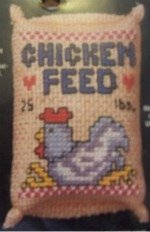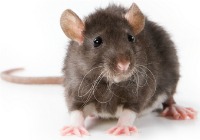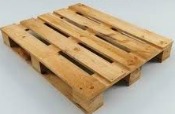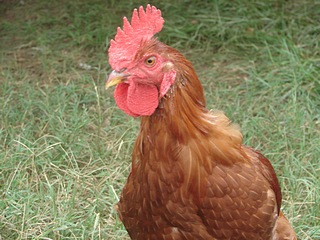Chicken Feed Storage
There are many ways to safely set up your chicken feed storage. The best storage for your feed depends on climate, storage area, quantity and accessibility.
The feed sacks that most chicken feed comes in are designed to preserve feed for several months as it is packaged, stored, shipped, stored again, sold, transported, and stored again at your facility.
Feed sacks are rarely designed to withstand water, heat, and hungry critters. Rodents, raccoons, goats, pigs, dogs and others will get into feed supplies, if possible.
Storing feed in a cool place will help preserve the quality longer. Make sure you always have enough feed when raising chickens so you don’t run out. Chicken feed has a limited shelf life and starts losing its nutritional value the day it is made.
Try to keep no more than a three to four week supply, unless you have the ideal storage facility, or need to prepare for extreme winter weather.

Chicken Feed Storage Ideas
1) A rodent proof storage building, trailer or room with ventilation, humidity control and shade would be ideal.
2) Some people store feed in plastic containers. A 10 gallon trash can with a lid works great for a 50 pound bag of feed.
Try not to pour new feed on top of old in containers. The old feed at the bottom may spoil contaminate new feed. Some feeds contain animal fats that can turn rancid and cause digestive problems.

3) In some climates metal cans have a tendency to sweat in hot summer temperatures, causing mold and decay, but in dryer climates, where feed is subject to rodents, some have had better success using metal trash cans.
It’s difficult to keep critters out of feed stores and rats and mice can and will chew through plastic storage containers and sacks.
4) Barn cats have long been used to patrol chicken feed storage areas. Just make sure tom cats can’t spray your feed sacks.
Cats are naturally night time hunters, which is the time that most rodents do their damage. Storage should be well off the ground in a cool dry place.

Wooden pallets have a tendency to provide the perfect cover for rodents where cats can’t reach them. Try not to spill any feed, as this can attract rodents and predators.
5) Many feeders will store a few days worth of feed. Chicken feed storage in feeders should be as high as possible so all chickens can feed and rodents can’t.
Always hang feeders away from roosts to prevent droppings mixing with feed. Rodent droppings and urine can contaminate feed and spread disease. Chicken droppings can be very moist and may cause mold and soured feed. Some keepers raise hanging feeders for the night and lower them again in the morning just to be safe.
6) Whole seeds and scratch grains often come in ventilated feed sacks. Since these are live seeds, they contain moisture and can be subject to spoiling in sealed containers.
If kept clean and dry whole seeds and grains have a longer shelf life than processed/cooked feeds. It’s a good idea to keep some on hand as back up chicken feed, if you suddenly find you’ve run out or had unexpected loss or damage of processed feed.
7) Chicken feed storage should always be protected from direct sunlight as this destroys vitamins and some nutrients.
Final Thoughts

There are probably as many ways to safely store feed as there are ways to keep chickens. There is nothing like finding valuable chicken feed ruined for one reason or another.
Leaky roofs, tarps with holes, critters, flooding, and the like are probably the most common reasons for loss and damage. When opening new feed sacks it’s always a great idea to look for any signs of damage or moisture like clumps of pellets or crumbles or mash.
If you have any doubts about feed it’s best not to use it. If you have taken all precautions and find you have purchased damaged feed, a reputable feed store should be willing to replace it or give you a refund.

Custom Search



New! Comments
Have your say about what you just read! Leave me a comment in the box below.